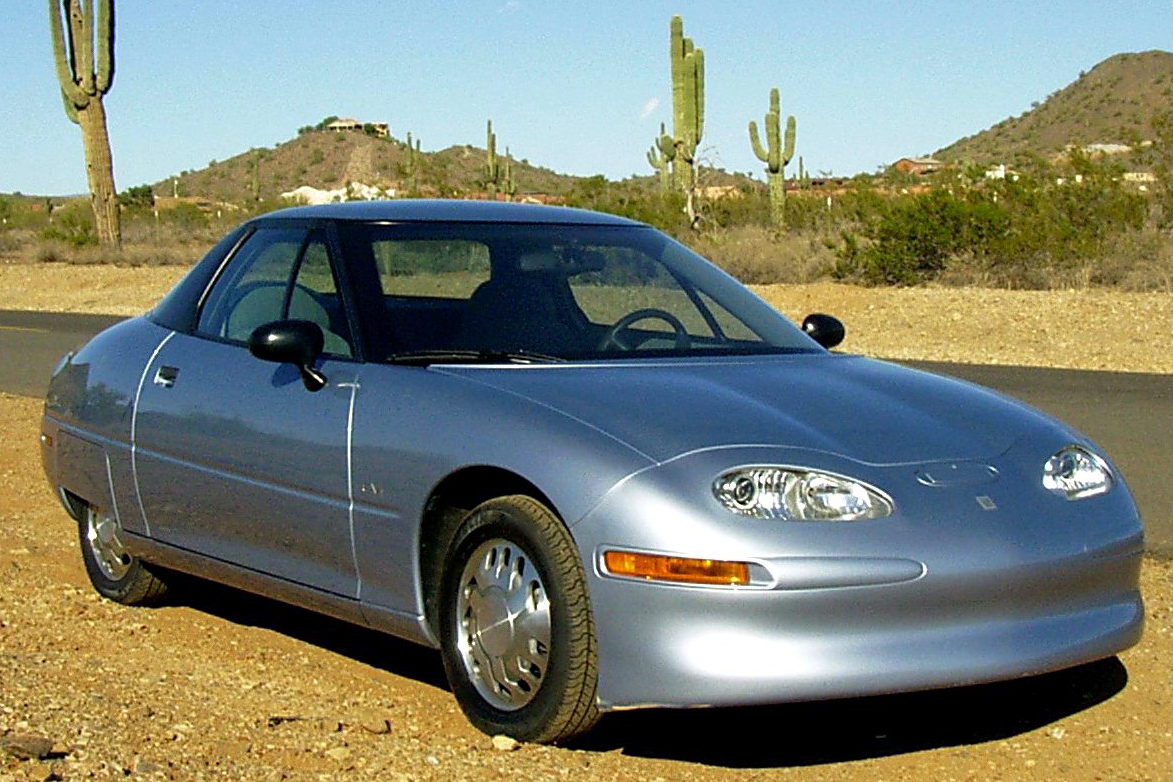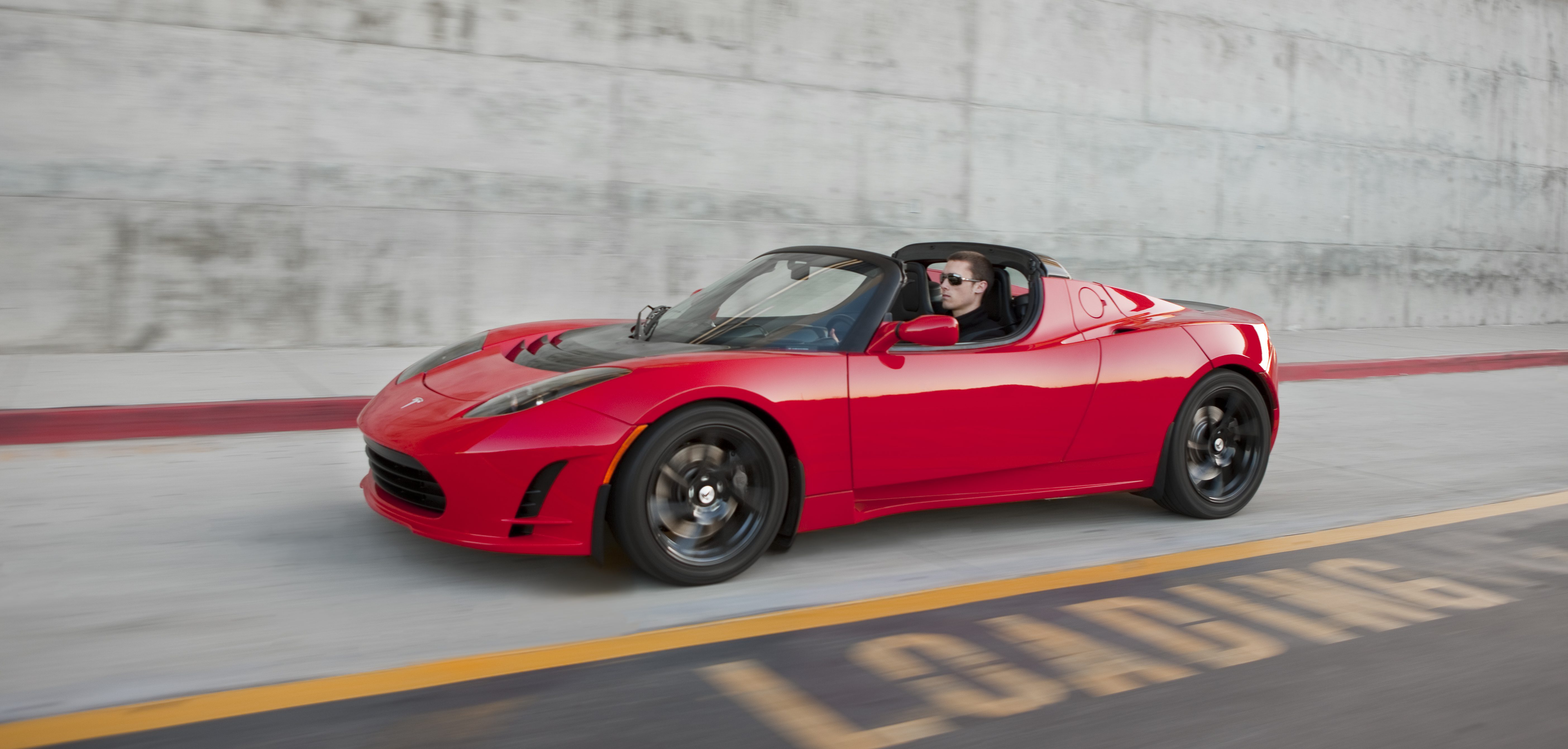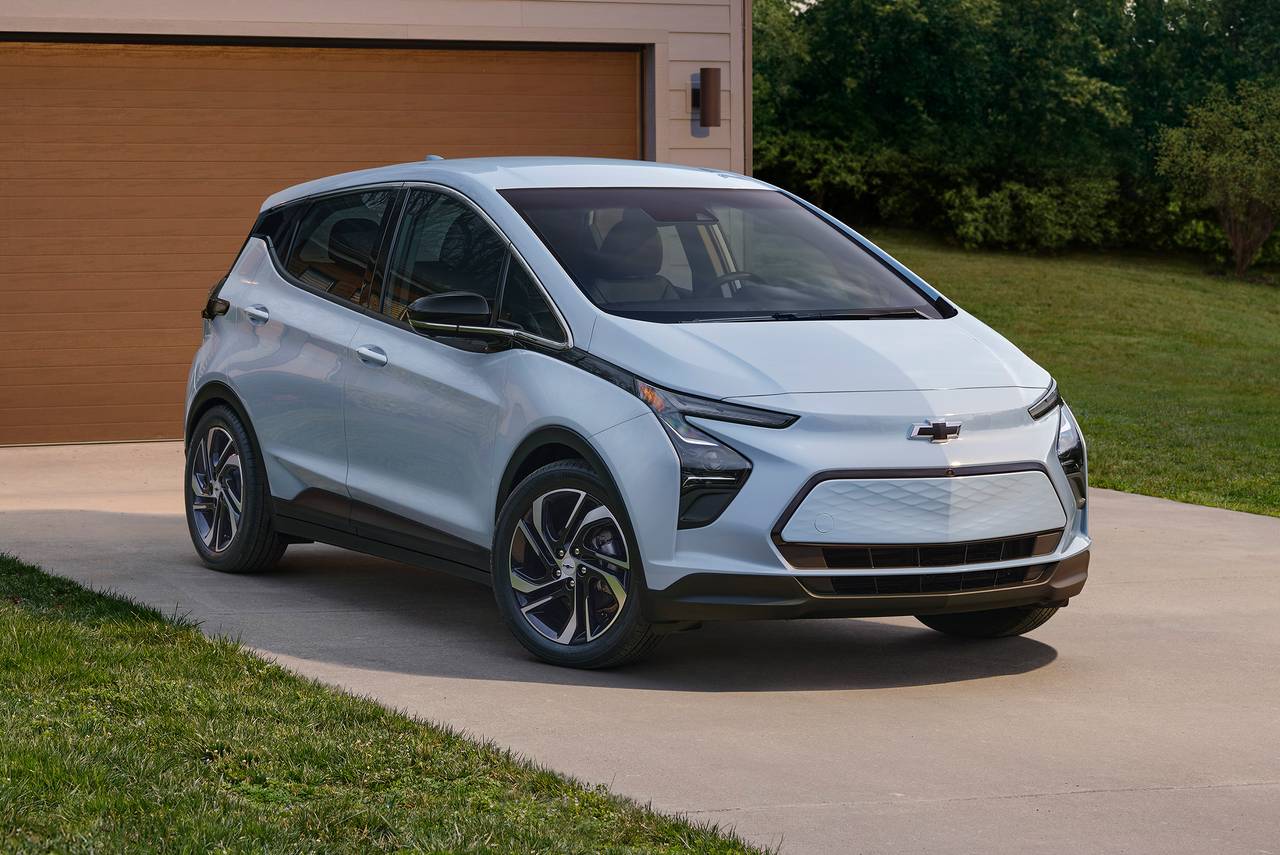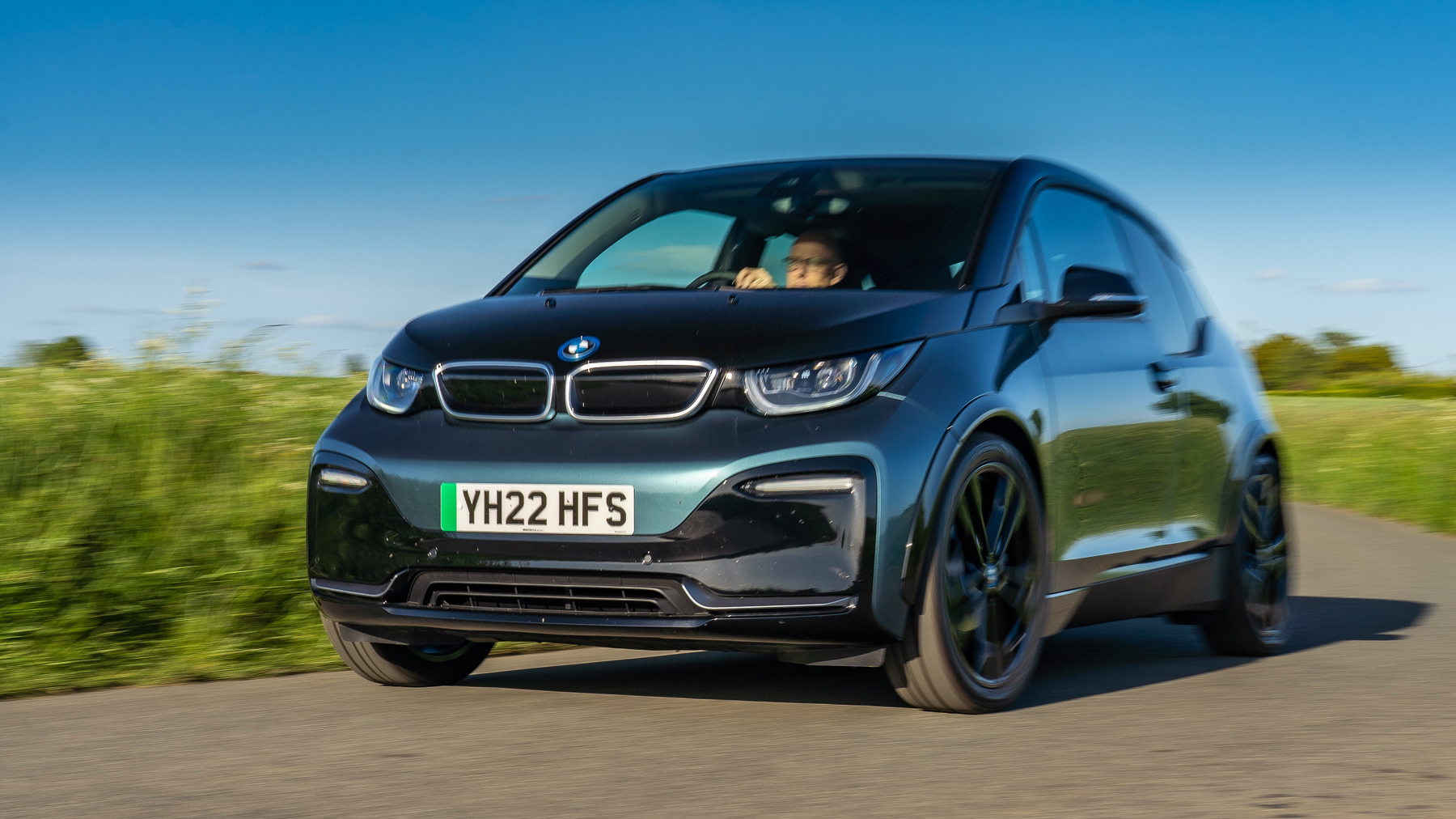Electric vehicles (EVs) aren’t fresh off the printing presses of innovation. They’ve been slowly charging down the road to revolution for quite some time. Coming at you like a whisper-quiet lightning bolt, we’re going on a throttle-thrilling journey back in time. Let’s elevate the unsung heroes and touchstones that have led the charge in the electric automotive world, and explore the pioneering electric vehicles that weren’t just stepping stones but monumental leaps in the automotive industry’s electrifying history. Buckle up: this could spark quite the static!
EV1: The First Mass-Produced Electric Car

For many, the story of the electric car began with vehicles like the Tesla Roadster or the Nissan Leaf. But if we rewind the tape a tad further, we find an electric trailblazer that captured the public imagination a whole decade before Elon Musk’s wheels hit the roads. Back in 1996, General Motors launched a vehicle that sent shockwaves through the industry: the EV1, touted as the first modern, mass-market electric car.
The EV1 was a shiny, futuristic two-seater that looked like it was more suited for a sci-fi movie set than a mellow suburban driveway. Powered by a lead-acid battery pack, it could zip from 0 to 60 mph in less than nine seconds (quite impressive for its time) and boasted a range of about 70 – 90 miles on a single charge. Sure, by today’s standards, this range may seem paltry, but bear in mind that this was before the advent of lightweight lithium-ion batteries and advanced energy management systems.
Though just over 1,100 EV1s were built during its brief production run from 1996 to 1999, this vehicle took on a symbolic resonance. It was the first high-profile attempt to provide a viable electric alternative to gasoline automobiles. Its sleek design and zero-emissions engineering captured the attention of the automotive world and public conscience alike, sparking conversations about sustainability and transport’s role in climate change.
The EV1, however, met an untimely end when GM controversially decided to recall and destroy most of the models, citing insurmountable commercial and regulatory obstacles to electric vehicle production. Those icons of the electric age were doomed to rust in junkyards or to be completely recycled.
While the EV1 wasn’t a commercial success, it laid essential groundwork for the electric vehicles we see today. Though it was a car before its time, it catalyzed the evolution of modern electric cars and proved that they could be more than just academic experiments. The EV1 stands tall in the history of electric vehicles, not as a failed attempt, but as a brave pioneer in a revolution that is only now coming to fruition.
Tesla Roadster: The Electric Revolution

The Tesla Roadster is widely considered to be the car that changed everything – it sparked the electric revolution. Introduced in 2008, Tesla’s Roadster ripped apart preconceived notions of what an electric car could be. It wasn’t a stale, sluggish vehicle designed for the hyper-conscious eco-warrior. It was sexy, and it was fast. Incredibly fast. We’re talking 0 to 60 mph in under 4 seconds, making it one of the quickest production cars available at the time.
Tesla’s audacious entry into the market was spearheaded by CEO Elon Musk, who made it a point to flip conventional wisdom on its head. His vision was an electric car that not only matched but exceeded the performance of its gasoline-powered counterparts. The Roadster, being the first highway-legal electric vehicle to use lithium-ion battery cells, had a range of more than 200 miles per charge – a game changer in a field where range anxiety was a significant stumbling block for potential buyers.
Its Roadster was an unabashed luxury sportscar, a realm traditionally dominated by established names like Ferrari, Porsche, and Aston Martin. Still, Tesla made clear its ambition was not limited to high-end toys for the wealthy. The Roadster was a loud, flashy statement of intent – a proof of concept that would pave the way for their models S, 3, X, and Y.
However, the Roadster was more than just a means to an end. It was a car stuffed to the brim with innovation. The electric powertrain, a far cry from rumbling internal combustion engines, gave drivers instant torque and breathtaking acceleration. It handled like it was on rails, thanks to its low center of gravity, courtesy of the floor-mounted battery pack.
The Tesla Roadster was not just an electric car that was on-par with traditional ones, it dared to be better. Groundbreaking doesn’t quite sum it up; the Roadster redefined what was thought possible and in doing so threw open the doors to the electric revolution. Today, with the imminent release of the second-generation Roadster, Tesla seeks to push those limits even further. Offering both incredible performance statistics and the promise of being the first production car to break the 2-second barrier for 0 to 60 mph, the electric revolution isn’t slowing down, it’s speeding up.
Nissan Leaf: Making Electric Cars Accessible to the Masses

When the Nissan Leaf rolled onto the global stage in 2010, it represented a dramatic shift. Here was an electric vehicle (EV) that wasn’t just a science experiment or a luxury toy for the rich and famous. The Leaf was something new: an everyday car for everyday people, but without the tailpipe. Recognized as the world’s best-selling electric car for a decade, the Leaf brought the electric revolution to the masses.
At a time when other manufacturers were struggling to push out EVs with 100-mile ranges and six-figure price tags, Nissan delivered a compact hatchback with a range of around 73 miles, and importantly, an affordable sticker price. The Leaf was an electric car that anyone could feasibly buy and drive. It wasn’t for tech titans or Hollywood celebrities – it was for office workers, for families, for anyone looking to cut the cord from fossil fuels.
In many ways, the Nissan Leaf was an EV pioneer in democratising electric mobility worldwide. With its user-friendly charging and ample range for the majority of daily commutes, the Leaf challenged the widespread anxiety about running out of battery and needing to wait hours for charging. It eased many of the worries that traditionally kept the average consumer away from electric cars.
Importantly, the Leaf didn’t feel like a compromise or an alien vehicle from a science fiction movie. Drivers entered a regular car cabin with familiar controls and gauges. Sure, there was no engine rumble or fuel smell, but that quickly became part of its appeal – a clear, clean separation from the age of internal combustion.
Today, the Leaf stands as a testament to Nissan’s foresight. With over half a million units sold worldwide, its legacy is significant. This little EV, with its affordable price tag and familiar driving experience, helped to show that electric vehicles could be more than just an environmental statement or high-priced novelty: they could be a practical, everyday reality. The Nissan Leaf took a bold step toward a future without tailpipes, an accessible electric vision that made history.
Chevrolet Bolt EV: An Affordable Long-Range Electric Car

Many will make the argument that the Chevrolet Bolt EV was the game-changer that vaulted electric vehicles into day-to-day accessibility for the average commuter. Born of parent company General Motors’ commitment to a zero-emissions future, it delivered an impressive range at a price point that didn’t make your wallet shriek.
The Bolt first came onto the scene in 2017, with an EPA-rated range of 238 miles. Yes, you read that right. Nearly 240 miles on a single charge, effectively eliminating the pervasive ‘range anxiety’ that had haunted prospective electric car owners for years. And the Bolt did this carrying a sticker price far less than that of its long-range counterparts.
With a price tag hovering around $37,000 before any federal or state incentives, the Chevrolet Bolt EV put long-range electric motoring within reach of many American car buyers. The Bolt wasn’t just an electric car you bought to make a statement or because you were a technology early adopter. No, you could buy a Bolt for sensible, practical reasons. It was an electric car you could use as your only car.
Under the skin, the Bolt made use of a large-capacity 66 kWh lithium-ion battery pack and an electric drive unit, kicking out 200 horsepower and 266 lb-ft of torque. That torque was filtered through the front wheels, illustrating one of the great joys of electric motoring, instant acceleration. Packed with power, the Bolt was no slouch, capable of hitting 60 mph in about 6.5 seconds, which was zippy for a compact hatchback.
In terms of design, the Bolt wasn’t aiming to win any beauty pageants. It followed a pragmatic approach, focusing on interior space and practicality. This utilitarian aesthetic, combined with high-visibility driving position, made for a surprisingly spacious and comfortable experience.
The inside story was equally as attractive. One of the Bolt’s most important features was its Regen-on-Demand paddle. Located behind the steering wheel, it allowed drivers to slow the car by simply pulling the paddle, recapturing energy and sending it back to the battery pack. Not only did this extend battery life, but it added a fun and engaging element to the driving experience.
With its practical price, robust range and sensible style, the Chevrolet Bolt EV was a watershed moment in EV history. It blew the doors off preconceptions that electric cars were only for a select, elite few. It demonstrated that an affordable, long-range electric vehicle was not just a pipe dream, but a modern reality.
BMW i3: Pioneering Electric Luxury

From its distinctive looks to the carbon-fiber-reinforced structure, the BMW i3 has sought to redefine what a luxury electric vehicle can be, combining the brand’s well-established sleek pedigree with a dedication to eco-awareness that makes it a pioneer in its own right. When it blasted onto the scene in 2013, the i3 carried with it the high expectations BMW is always associated with, and it did not disappoint.
What sets the BMW i3 apart from many of its competitors is that it was not just an existing vehicle that had been retrofitted to accommodate an electric motor. No, this was a vehicle designed from the ground up to be an electric car – a bold move that ensured every aspect of the i3 was centered around maximizing efficiency, performance, and of course, luxury.
One of the main lures of the BMW i3 was its opulent interior, which stood out with its appealing blend of sustainability and chic design. Think open-pore eucalyptus wood, naturally treated leather, and door trims made out of Kenaf fibers. All these materials were renewable and gave the i3 a sort of ‘eco luxury’ appeal, indeed a pioneering step in the electric car industry.
The BMW i3 also saw the introduction of mind-blowing tech enhancements. Among them was the iRemote app, allowing owners to check their car’s charging status, locate charging stations, or even set the cabin temperature from their smartphones. BMW’s rocket into the EV world also introduced an efficient use of regenerative braking to extend the car’s range – a technology now common in electric vehicles, but at that time was a trendsetting feature.
Under the hood, the i3 boasted an electric motor that delivered 170 horsepower and up to 184 lb-ft of torque. While not designed to be a speed demon, it offered strong, impressively quiet acceleration, benefiting from the instant torque electric engines are prized for. The 22-kWh lithium-ion battery pack provided a substantial range, a characteristic enhanced by the optional 0.6-liter two-cylinder gasoline range extender.
The major leap that BMW took with the i3 has indeed left an indelible mark in the annals of electric vehicles. It sought to prove that one could enjoy the finer things in life and be responsible stewards of the environment. Today, the luxury electric vehicle market is booming, and the i3 is widely acknowledged as the pioneer that paved the way for luxury brands to make their entrance into the electric arena.
FAQs
What was the first Volkswagen electric car?
Which model did Tesla kick things off with?
Which quirky electric car came from General Motors?
Conclusion
The resources, talent, and time poured into electric car development have shaped the progress we see today: a no-compromise substitute for gasoline cars. As we admire the latest groundbreaking models, we can’t forget these pioneers who made it possible. Their unconventional thinking and tenacious spirit cast the mold, set new standards, and ignited the electrification revolution in the auto industry. Had it not been for those early progenitors, our roads would look decidedly different today. As we look to the future of transportation, these trailblazing models will forever hold a pivotal place in automotive history.
